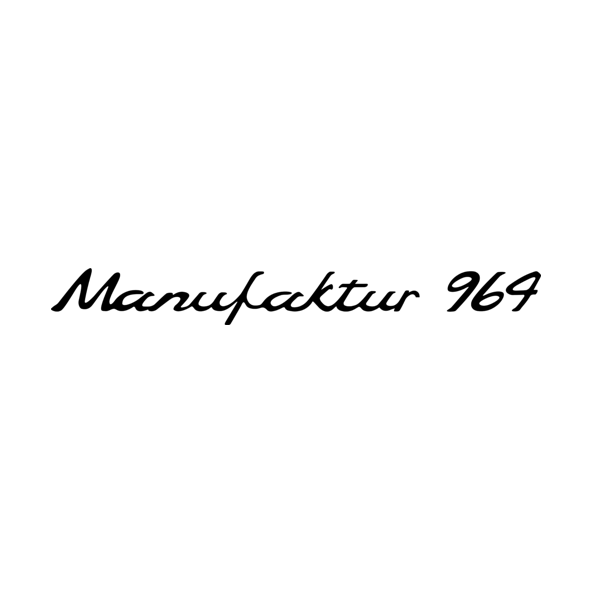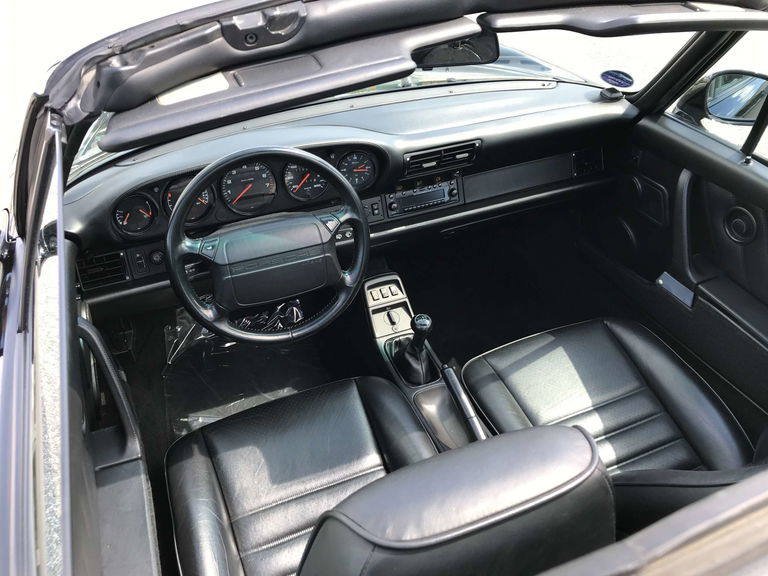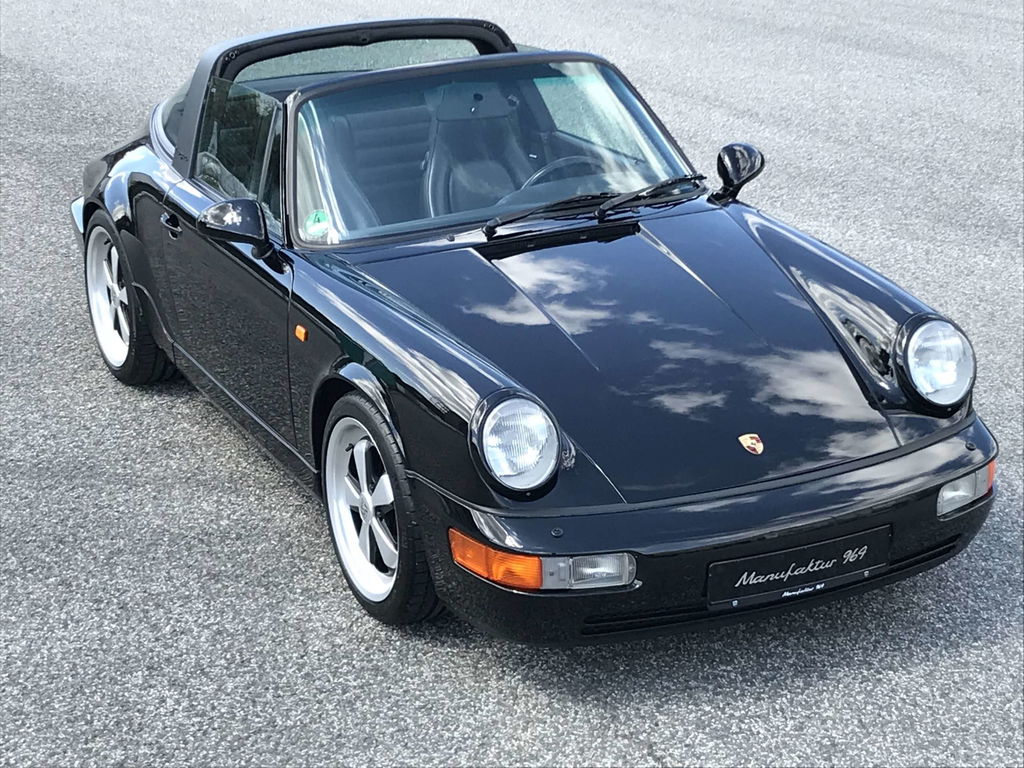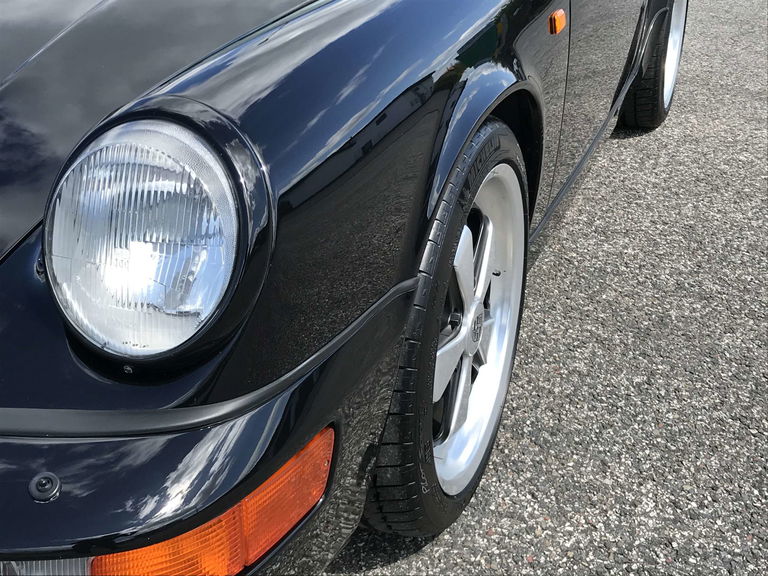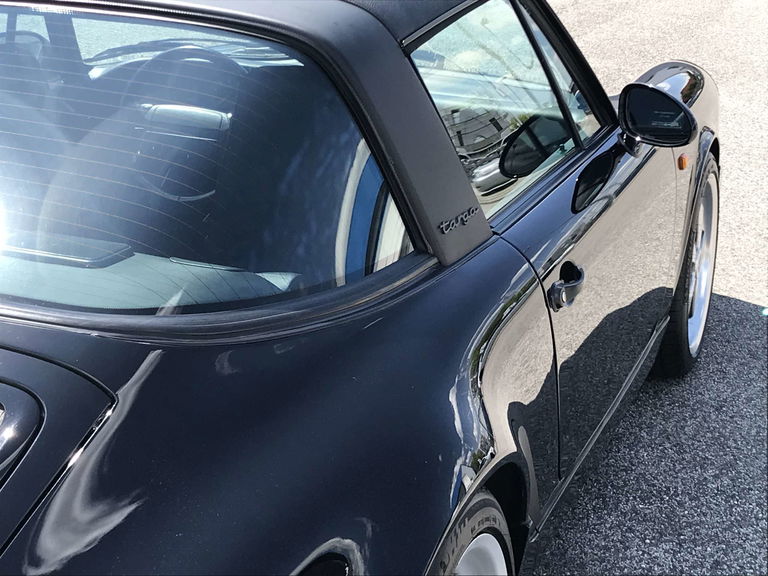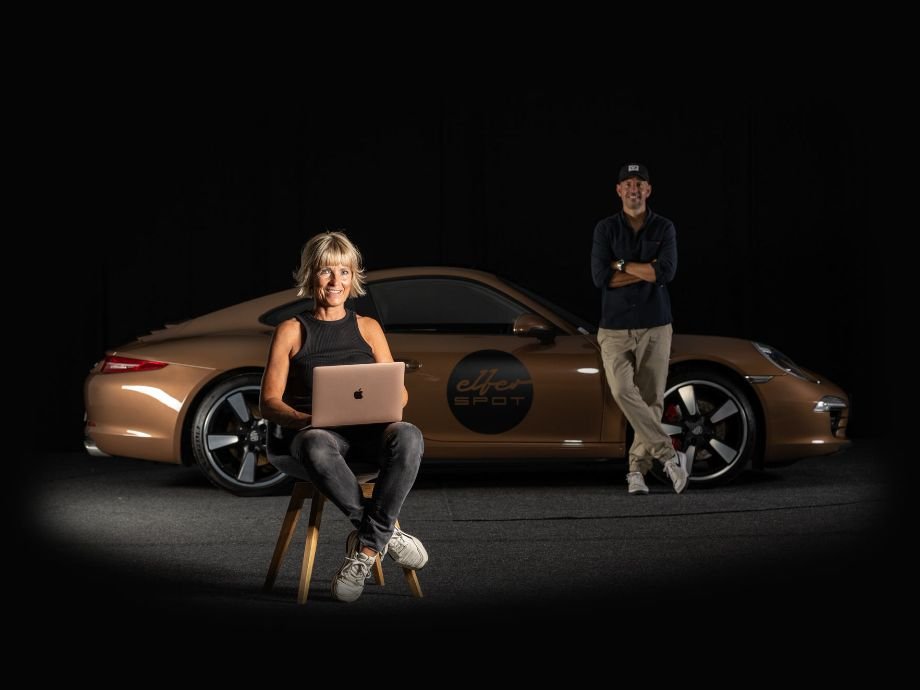These standards are sometimes a little excessive, but the quality of our work is at the heart of everything we do.
You can find more information about us, our philosophy, and our work at the link to our website:
We purchased the base vehicle in 2020 with a mileage of 110,000 km and then extensively restored it.
COUNTRY CODE: C00 GERMANY
139 SEAT HEATING LEFT, ADJUSTABLE
231 CHANGE OF TIRE BRAND DURING A PRODUCTION PERIOD
327 SYMPHONY RDS RADIO
340 SEAT HEATING RIGHT, ADJUSTABLE
403 CAST ALLOY WHEELS (CUP DESIGN) 7JX17 205/50 ZR17; 8JX17 255/40ZR17
567 WINDSCREEN WITH GRADUALLY TINTED UPPER SECTION
573 AUTOMATIC AIR CONDITIONING
As part of the "rolling restoration," the following options were added or changes made:
Body: Retro Fuchs forged wheel set in 8X18 and 10X18
Audio: Blaupunkt Bremen SQR 46 with hands-free kit and new speakers
Engine: Manufacturer engine overhaul package II
As part of the "rolling restoration," the following components were completely overhauled:
40,000 km service (of course)
Dry ice blasting
Repair painting for paint damage
Lights/headlights
Air conditioning and heating
Instruments
Transmission / drive Overhaul
Fuel system
Oil system
Engine overhaul package I
Engine overhaul package II
Transmission overhaul
Chassis
Brake System
All our 964s are restored according to defined standards.
It starts with checking the initial condition of each vehicle. This check includes the following steps:
Thorough cleaning of the exterior and interior
Visual inspection of the paintwork
Visual inspection of the bodywork
Visual inspection of the interior
Functional test of all components such as air conditioning/heating, lighting control units, etc.
Test drive
Visual inspection of chassis/brakes/engine
The second step is dry ice blasting. This includes:
Removal of all underbody panels
Removal of the front mask, rear trim, and sill panels
Removal of all lighting elements
Dismantling, cleaning, and storing all removed panels
Draining the engine oil, transmission oil, washer fluid, and brake fluid
Remove engine and transmission
Transport to dry ice blasting
Dry ice blasting of underbody, front, rear, and engine compartment
After dry ice blasting, the scope of the restoration is determined:
Repeat visual inspection of the underbody for corrosion and damage
Determination of the scope of bodywork
Inspection of the chassis components
Inspection of all lines (brake, fuel, oil, etc.)
Removal of the oil tank, oil cooler, and all oil lines (lines are generally replaced)
Chassis and brake components are generally overhauled or replaced
Now the preparation for the paintwork begins:
Removal of the parts required for repair painting
The individual assemblies are now taken to the respective trades:
Body to the body shop/paint shop
Interior to the upholstery department (seats and trim for refurbishment)
Dashboard for overhaul
Overhaul electronic components depending on defects
Engine and transmission sent to Plant 1 for complete overhaul
While the bodywork and interior are being worked on, the engine and transmission are overhauled. The overhaul generally includes:
Engine:
Manufacturer 964 overhaul package I
Pressure loss and visual inspection
Disassemble engine up to the camshaft housings, clean all parts
Wear parts such as the clutch, etc. are generally replaced
Replace auxiliary units such as starter motor and generator
Overhaul ignition distributor, replace if necessary
Check attachments for proper function and replace if necessary
Remove paint from engine paneling, blast and powder coat (damaged parts are replaced and also processed)
Re-galvanize all galvanized parts (as original)
Check exhaust system, sandblast and replace if necessary
Reassemble engine, complete for installation
Manufacture 964 Revision Package II
Completely disassemble the engine and clean all parts
Check and measure the crankcase, machine if necessary, replace cylinder stud bolts if necessary
Check crankshaft, measure, polish, replace if necessary
Check connecting rods, measure, angle, replace bearings
Check valve train, intermediate shaft, timing chains, etc., measure, replace worn parts
Check camshafts, rocker arms, rocker arm shafts, etc., measure, replace if necessary
Completely overhaul cylinder heads
Check pistons and cylinders, measure, replace most of them
Check camshaft housing, chain housing, etc., measure, machine/replace if necessary
Install crankcase (generally, all bearings, seals, etc. are replaced)
Wear parts such as the clutch, etc. are generally replaced
Replace auxiliary units such as starter motor and generator
Overhaul ignition distributor, replace if necessary
Check attachments for proper function and replace if necessary
Remove paint from engine casing, blast and powder coat (damaged parts are replaced and also processed)
Re-galvanize all galvanized parts (as original)
Check exhaust system, sandblast and replace if necessary
Reassemble engine, complete for installation
Transmission:
After visual inspection for leaks, blast clean and disassemble
Check wear parts and replace if necessary
For all-wheel drive vehicles, check front differential and drive train for leaks and proper function; replace worn parts or overhaul components if necessary
Once the individual tasks have been completed, assembly takes place in Plant 1 or Plant 2, depending on capacity, in the following steps:
Assemble chassis/brakes (either overhauled or new components)
Install oil cooling system (all lines/hoses new)
Complete the body with new seals and piping (doors, hoods, trim strips, etc.)
Install lighting and check function
Install new carpet set and, if necessary, new headliner
Insert windows
Install interior
Install engine and transmission, start up
Mount wheels (rims stripped, powder-coated, new tires)
Measure vehicle (adjust height, wheel load, track, camber, etc.)
Test drive / Check all functions / Quality check
Presentation for general inspection approval, registration of customizations if necessary
Handover inspection before delivery

